 |
|
Name of Organization |
Al-Akhtar Trust |
|
Formation |
Al-Akhtar
Trust was formed in November 2000,
registered by
Jaish-e-Muhammad
as a humanitarian aid agency. It participates in
financing and facilitating activities of JeM and other
extremist groups.
|
|
Leadership |
Supreme Leader: Maulana Masood Azhar (Since November
2000)

(Maulana
Masood Azhar)
Azhar has close links to Binori Mosque Karachi, which is
a Deoband Anti-Shia seminary. This seminary is renowned
for its support for jihad in Kashmir against India and
in Afghanistan against the US and its allied forces.
Former Chairman and Chief Executive Officer: Hakeem
Muhammad Akhtar.
Chairman,
President and Chief Executive Officer: Mohammad Mazhar
(Current) |
|
School of thought/ Classification |
Deoband Sunni
Deobandi interpretation states
that a Muslimís first loyalty is to his religion and
then to the country of which he is a resident or
citizen. Its practitioners also have an obligation to go
to any country to wage jihad to protect the Muslims of
that country. In other words, a global understanding of
their role. The Deobandi interpretation of Islam is
widely practiced in Pakistan. They also share the
Talibanís restrictive view of women and regard Shiites as
non Muslims and are also against Ahmadis. |
|
Ideology |
Al-Akhtar
Trust allegedly provides financial and logistical
support to Al-Qaeda and the Taliban. And is alleged to
provide basic needs such as shelter, clothing and food
to the orphans and families of the Taliban and Al-Qaeda
jihadists. |
|
Framework |
Al-Akhtar
Trust operates from Pakistan and Afghanistan. Their
centres are located in Islamabad, Lahore, Bahawalpur,
Mirpur Khaas and Spin Boldhak.
The headquarters of Al-Akhtar Trust is in Karachi. |
|
Financial resources |
Al-Akhtar
Trust guise of doing charity work and appeal to
religious obligations, seek funds from well-intentioned
donors in Pakistan. |
|
Recruitment tools & demographics |
N/A |
|
Connections & linkages |
Al-Akhtar Trust is alleged to have
links with the
Al-Qaeda Network,
Harkat-ul-Mujahideen,
Hizb-ul-Mujahideen,
Lashkar-i-Taiba and
Lashkar-e-Jhangvi. AAT is
believed to be carrying out the activities of
Al-Rashid Trust after its
proscription in 2001.
|
|
Areas of Operation |
1.
Afghanistan
2.
Pakistan
3.
Iraq |
|
Tools |
N/A |
|
Name Variations |
Al-Akhtar
Trust is referred to with a variation of names:
1.
Pakistani Relief Foundation
2.
Pakistan Relief Foundation
3.
Azmat-e-Pakistan Trust
4.
Azmat Pakistan Trust
5.
Al-Akhtar Trust International |
Who they are
Al-Akhtar Trust is a
Pakistan based organisation that has been allegedly working
under the guise of a charitable organisation.
It has been allegedly providing support to the Al-Qaeda and the
Afghan Taliban and raising fund for jihad in Iraq. It is also
alleged to be linked the killing of the Wall Street Journalist
Daniel Pearl.
History
Al-Akhtar Trust was
formed in November 2000 to provide financial aid to extremist
groups including the Taliban.
The banned organisation JeM, after its proscription, registered
Al-Akhtar Trust as a humanitarian aid agency. JeM sought to use
this Trust to provide arms and ammunition to other extremist
groups
and to provide basic needs to the orphans and families of the
Taliban and al-Qaeda fighters.
Al-Akhtar Trust is alleged to have started conducting the
activities of Al-Rashid Trust after the formerís proscription in
2001.
In 2003, Al-Akhtar Trust was alleged of raising funds for the
jihad in Iraq.
Organizationís Message
Al-Akhtar Trust was
established under the guise of a charitable organisation,
providing aid to the refugees and other needy groups.
Target Audience
Under the guise of a
charitable organisation, Al-Akhtar Trust appeals to religious
obligations targeting donors in Pakistan.
Tools
N/A
Splinter Groups
N/A
Annexure:
Jaish-e-Muhammad:
Jaish-e-Muhammad is an
extremist organisation based in Pakistan, formed in 2000. It is
operational in the region of Jammu and Kashmir, using violence
to affect a withdrawal of the Indian security forces from the
region. It has anti-west ideology and believes that the US is a
threat to the Muslims worldwide. In recent years, JeM has added
the sectarian minority communities in Pakistan to their
hit-list. It has been proscribed by the government of Pakistan
and throughout the globe.
Al-Qaeda:
The organization was
formed in the late 80s by Osama Bin Laden who came to
Afghanistan to fight the Soviet forces. The literal meaning of
Al-Qaeda is ďThe BaseĒ. Al-Qaedaís network includes outfits
which are operating in estimated 65 countries worldwide.
Harkat-ul-Mujahideen:
Harkat-ul-Mujahideen
is a Pakistan based militant group established in 1985, to fight
against the Soviet forces in Afghanistan. After the retreat of
the Soviet forces from Afghanistan in 1989, they started
fighting against the Indian forces in the Indian-occupied
Kashmir.
Hizb-ul-Mujahideen:
Hizb-ul-Mujahideen is an outfit established in 1989, based in
Muzaffarabad. The group promotes the utilization of violence for
the liberation of Jammu and Kashmir from the Indian forces and
its accession to Pakistan. The group is believed to be the
militant wing of
Jamaat-e-Islami
in Pakistan and Kashmir.
Lashkar-i-Taiba:
Lashkar-i-Taiba, also
known as Jamaat-ud-Dawa, is a Sunni extremist organisation based
in Pakistan formed in 1990. It is operational in Pakistan,
Kashmir and India, aiming to establish an Islamic caliphate in
Jammu and Kashmir. LeT maintains links to the Afghan Taliban and
Pakistan based extremist groups including Jaish-e-Muhammad and
Lashkar-e-Jhangvi. LeT is reported to have been involved with
militants in places where conflict involving Muslims have arisen
including Bosnia, Chechnya, Kosovo and Afghanistan. The majority
of LeTís membership consists of Jihadists from Pakistan and
Afghanistan.
Lashkar-e-Jhangvi:
Lashkar-e-Jhangvi (LeJ) is a Pakistan based militant group, a
splinter of the
Sipah-e-Sahaba Pakistan
(SSP). It was allegedly formed in 1996, claiming that the SSP
were deviating from their ideology. LeJ has been involved in
attacks on Shiite, who they claim are infedals. Thay have been
most active recently in Balochistan, in the massacre of the
Shiite Hazara Muslims. They are linked to the Taliban, alongside
whom they have fought in Afghanistan. They are also linked to
the Baloch militant organisation;
Balochistan Liberation Front.
Al-Rashid Trust
Al-Rashid Trust is a
Pakistan based welfare organisation which has spread its network
throughout Chechnya, Kosovo and Afghanistan. Primarily aiming at
carrying out welfare projects, Al-Rashid Trust actively promoted
Jihad through booklets written by prominent leaders. They
perceived international NGOs as enemies of Islam and outing
theses organisations from Afghanistan has been one of their
aims.
Shiites:
Shiites consider
Hazrat Ali as the first true leader (Imam) of the Muslim
community. Shiites religious practice revolves around the
remembrance of Hazrat Aliís younger son Hazrat Hussain who was
martyred in the city of Karbala in Iraq in the year 680 AD.
Jamaat-e-Islami:
It is a religious political party established throughout Indian
sub-continent, with its ideology based on their interpretation
of Islamic principles. The party was formed on August 26, 1941
at Lahore under the leadership of Mawlana Syed Abul Ala Mawdoodi.
After the formation of Pakistan in 1947, the organization
converted into two independent ones namely Jamaat-e Islami
Pakistan and Jamaat-e Islami Hind. Later on after the formation
of Bangladesh in 1970s, Jamaat-e-Islami was also revived there.
The disputed region of Jammu and Kashmir has its own autonomous
wing.
Sipah-e-Sahaba Pakistan:
The Sipah-e-Sahaba
Pakistan (SSP) is an extremist organisation based in Jhang,
Pakistan. It was established in 1985 under the anti-Shiite
philosophy. The group was pro-scribed in 2002 by the government
of Pakistan, redesigned in 2003 changing its name to
Millat-e-Islamia Pakistan. Currently the organisation has
adopted the name; Ahle Sunnat Wal Jamaat (ASWJ), and has
contested in the elections of 2013.
Balochistan Liberation Front:
The Balochistan
Liberation Front is assumed to have been established in the
1960s during the Baloch insurgency. It aims for the liberation
of the province of Balochistan in Pakistan. The outfit targets
migrant workers and is alleged to threaten journalists.
|
Name of
Organization |
|
TEHRIK-E-TALIBAN
PAKISTAN (TTP) |
|
Formation |
|
Established-
Dec 2007
Since 2003, pro-Taliban groups of various names,
capacities and forms engaged Pakistani security forces.
In December 2007, TTP was established consisting of
major and smaller pro-Taliban elements.
A total of 27 groups took part in formation of this
outfit. Its focus is mainly against the Pakistani state;
however it also provides support to the insurgency
carried out in Afghanistan[1].
|
|
Leadership |
|
Leader & First
Commander-Baitullah Mehsud
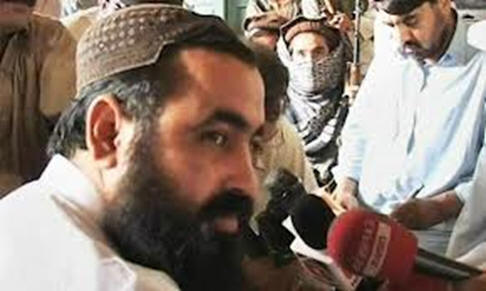
Baitullah
Mehsud at a Press Conference in May 2008
TTP was formed under the leadership of Baitullah Mehsud
in December 2007, who was the first commander of the
organization. He was from the Broomikhel branch of the
Shabikhel sub-tribe of Mehsuds.
1970s- He was born in the early 1970s at Landi Dhok
village in Bannu. He received no formal education and
attended only religious seminaries
[2].
1980s-1990s-He took active part in fight against Soviet
invasion of Afghanistan in the late 1980s and in the
subsequent civil war in the 1990s
[3]. He is also believed
to have served under
Jalal ud-Din Haqqani. He was also
rumored to have been diagnosed with diabetes
[4].
2004-He grabbed at the chance of filling the leadership
vacuum left by the death of
Nek Muhammad in 2004. He
continued violent engagement with the Pakistani security
forces and carried out various high profile terrorism
activities [5].
Baitullah was also accused of ordering the assassination
of former prime minister Benazir Bhutto, which he
denied.
Aug, 2009-Baitullah was killed in a drone strike during
August 2009 [6].
The organization absorbed various pro-Taliban groups and
their leadership.
The prominent commanders in the cadres included:
1) Maulana Fazalullah
Nov 2013-Fazalullah took the reins of TTP, after the
death of Hakimullah in a drone strike during November
2013 [7].
1975-Fazalullah originally named Fazal-e Hayat was born
in 1975 at Mam Dheri or Imam Dheri, Swat.
2001- Fazalullah fought alongside his father-in-law Sufi
Muhammad, founder of
Tehrik-e Nifaz-e Shariat-e
Muhammadi (TNSM); in Afghanistan during 2001. After
their return, they both were jailed and the vacuum was
filled by the son-in-law.
He earned the nickname ďMaulana RadioĒ after he started
giving sermons on illegal FM radio stations. He aligned
his group with TTP and led an anti-state campaign in
Swat.
2009-After a military campaign to evict the area from
miscreants in 2009, Fazalullah went underground
[8].
2) Hakimullah Mehsud-Commander of Khyber, Kurram &
Orakzai
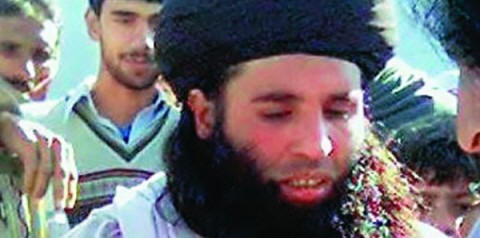
Hakimullah Mehsud
2007-Hakimullah is believed to be in his late 20s and
was born at Jandola in South Waziristan. His real name
is Zulfiqar, which he changed in 2007 after being
appointed chief spokesman.
2009- He took over the leadership after the death of
Baitullah Mehsud in 2009. He also has no formal
schooling and he studied in religious seminary in Hangu.
He later served in the war in Afghanistan.
After the formation of TTP he was appointed commander of
Khyber, Kurram and Orakzai
[9].
2009-NATO Troops attack-He is believed to be behind many
high profile attacks on Pakistani and NATO troops,
including the December 2009 attack on Forward Operating
Base Chapman in Khost, Afghanistan and the failed bomb
plot of Times Sqaure, New York
[10].
Nov, 2013-Hakimullah was killed in a drone strike on 1st
November, 2013 in North Waziristan
[11].
3) Wali ur-Rehman Mehsud (Deputy to Baitullah)
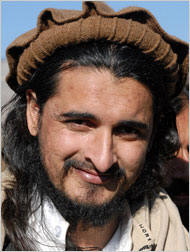
Wali ur-Rehman Mehsud
1996-Wali ur-Rehman was around 40 years of age and his
family lives in Miramshah. He attended a religious
seminary in Faisalabad and later on in 1996 became a
teacher at a seminary in South Waziristan.
2004-He was aligned with Jamiat-e Ulema-e Islam Fazal
ur-Rehman group (JUI-F) till 2004. Wali undertook
attacks on coalition forces in Afghanistan and also on
Pakistani security forces. He was appointed deputy to
Baitullah and also looked after the financial matters
[12].
After the death of Baitullah, there were differences
between Hakimullah and Wali ur-Rehman. Later on,
Hakimullah became the head of TTP, while Wali was
assigned command of South Waziristan. He later fled to
North Waziristan after the military operation to cleanse
South Waziristan from TTP
[13].
May 2013-Wali ur-Rehman was killed in a drone strike
during May 2013 in North Waziristan
[14].
4) Hafiz Gul Bahadur (Supreme Commander of the Taliban)
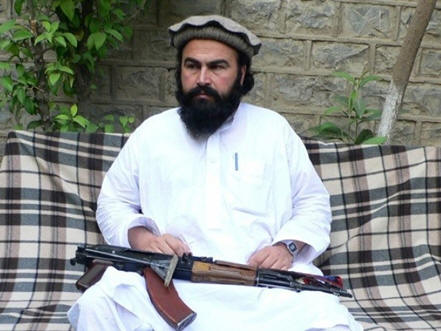
Gul Bahadur is also the supreme commander of the Taliban
in North Waziristan. He belongs to Madda Khel clan of
the Uthmanzai Wazir and is believed to be a descendant
of Mirza Ali Khan, who gained his fame for resistance
against the British Indian government.
He is a resident of Lwara and received his religious
education from a Deobandi seminary in Multan.
1980s-Gul Bahadur took active part in Afghanistan during
the Soviet invasion in the 1980s and in the subsequent
civil war.
2007-He was appointed deputy head of Tehrik-e Taliban
Pakistan (TTP) in 2007, but distanced himself from the
group after rifts emerged between the various factions.
Later, Hafiz Gul Bahadur, Baitullah Mahsud and Mullah
Nazir formed the Shura Ittihad ul-Mujahideen for
Afghanistan.
2006 & 2008-Gul Bahadur is also involved in peace deals
with the Pakistani government in 2006 and 2008
[15]. He has
also shown resistance against the anti-polio vaccination
drive in North Waziristan
[16].
5) Maulvi Nazir
1975-Nazir was born in 1975 at Angor Adda, Afghanistan.
He received his education through religious seminaries,
including Jamia Dar ul-Uloom Waziristan, run by
religious political party of
Jamiat-e Ulema-e Islam-Fazal
ur-Rehman (JUI-F). He also remained a worker for the JUI-F
during these years.
1996-He joined the Taliban in 1996 and returned to Wana
after the fall of Taliban. He remained an active
supporter of Taliban and
Al-Qaeda, while fighting
alongside them against the Pakistani security forces.
2004-He was arrested in 2004 but was later released in
the Shakai peace deal. Later on Nazir established his
own outfit between 2006 and 2007
[17].
2007-He joined TTP in December 2007 and was a deputy
commander [18]. He had a subsequent falling out with TTP and
later also won Pakistani government and local support to
evict foreign fighters from Wana, resultantly being
embroiled in hostile engagements with rival factions.
However, Nazir carried out operations in Afghanistan
against the coalition troops.
Jan, 2013-He was killed in U.S. drone strike near Wana
during January, 2013
[19].
|
|
School of
Thought |
|
Deobandi:
These are a significant group of Muslims present in the
sub-continent, who adhere to the Sunni sect and follow
the ideology of Imam Abu Hanifah. The school of thought
is named after University of Deoband Dar ul-Aloom in
India. They believe in safeguarding the teachings of
Islam, while spreading the religion through preaching
[20].
TTP has its own extremist version of this ideology,
where it justifies the use of force and violence to
enact Sahriah law within the country. It also demands
Pakistani stateís disassociation from the coalition for
war on terror [21].
|
|
Structure of
the Organization |
|
Network-The
organization has an estimated strength from 5,000 combat
personnel to overall membership of 50,000
[22].
TTP is a conglomerate of various militant outfits and
its ranks consist of:
Pashtun,
Arab,
Afghan,
Chechen,
Uzbek and
Punjabi militants.
A consultative council of 40 senior Taliban gives
guidance to the organization
[23].
The membership is also based on various tribal
affiliations, leading to variable relations with local
commanders [24].
Base-Tehrik-e Taliban is based in South Waziristan,
while its chapters are established under local
commanders [25]. The organization is believed to have created
cross-sectional working groups with other terrorist
groups throughout Pakistan. These groups consist of 10 Ė
15 members each and have assisted in expanding the
operations of the outfit
[26].
|
|
Financial
Resources |
|
TTP is
involved in:
Drug trade,
Kidnap for ransom,
Extortion and
Other criminal activities adopted for generating
funds.
Besides these the outfit has long and effective
relationship with Al-Qaeda and Afghan Taliban, providing
it with sufficient resources
[27].
|
|
Status |
|
Proscribed-Aug25, 2008-Pakistani Government
The group has been proscribed by the Pakistani
government on August 25, 2008.
Sep 01, 2010-FTO: The US State Department had put the
outfit on its Foreign Terrorist Organizations (FTO) on
September 01, 2010.
Jan 18, 2011-Britain proscribed TTP on January 18, 2011,
Canada on July 05, 2011 and on July 29, 2011 the United
Nations Security Council (UNSC) put the organization on
its international anti-terrorism sanctions list
[28].
|
|
Recruitment
tools & demographics |
|
The outfit
recruits from:
Tribal ranks,
Religious seminaries and
Draws its strength from foreign fighters belonging to
Middle East and Central Asia
[29].
As mentioned earlier, it has also formed working
groups with affiliated organizations and draws on their
strength [30].
|
|
Ideology |
|
Tehrik-e
Taliban endorses violence to implement Shariah law in
Pakistan, while it also propagates armed struggle
against the Pakistani security forces and coalition
forces present in Afghanistan
[31].
|
|
Areas of
Operation |
|
Main areas of
operation-KPK, Tribal & Afghanistan
The Tehrik-e Taliban Pakistan conducts operations
throughout Pakistan with the assistance of its
affiliates. Its influence is mainly in Khyber
Pakhtunkhwa and tribal areas, while it also carries out
activities in Afghanistan
[32].
|
|
Linkages |
|
The
organization has linkages with local and international
terrorist organizations including:
1) Al-Qaeda,
2) Taliban,
3) Lashkar-e Jhangvi (LeJ)
4) Jaish-e Muhammad (JeM)
5) Tehrik-e Nifaz-e Shariat-e Muhammadi (TNSM) and
6) Islamic Movement of Uzbekistan (IMU)
[33].
|
|
Tools |
|
Print Media:
As per the
available information TTP utilizes magazine publications
in Urdu, English and Arabic language.
Magazines
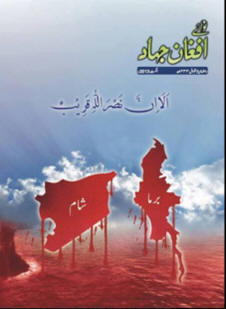 [34] [34]
1) Nawa-e Afghan Jehad
[35]
2) Asarullah Urdu
[36]
3) Ihya-e Khilafat
[37]
4) Inspire [38]
|
| |
|
Audio / Video:
The outfit is also utilizing audio[39] /visual[40] tools to
disseminate their agenda. These tools are meant towards
gaining outreach to individuals who are less literate or
are not in the habit of reading. The media content of
the group is handled by Umar Media.
The audio/visual media contains:
Speeches,
Coverage of activities and
Promotional songs.
Download
videos:
Video 1
Video 2
Video 3
Video 4
Video 5
Social Media:
The organization is also very active on the social
media, where it promotes its ideology and activities
through twitter, Facebook and blogs.
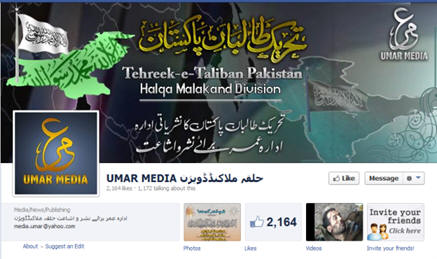 [41]
[41]
Twitter:
https://twitter.com/TehreekeTaliban
http://twitmail.com/profile/AU_Urdu
http://twitmail.com/profile/AU_Urdu
https://twitter.com/AU_Urdu
Facebook:
https://www.facebook.com/jihadinpkistan
https://www.facebook.com/pages/Pakistani-taliban/195074333910776
https://www.facebook.com/pages/Al-Jehad/321542471211854
https://www.facebook.com/UmarMedia
https://www.facebook.com/pages/Nawai-Afghan-Jihad-Magazine/352668991436856
https://www.facebook.com/AU.Urdu
https://www.facebook.com/Ansarullah.Urdu
Blogs:
http://jihadepakistan.blogspot.com/
http://nawaiafghan.blogspot.com/
http://ihyaekhilafat.blogspot.com/
|
|
web site |
|
There are
various websites run by TTP, which are concerned with
further disseminating their offline tools such as
publications to promote their ideology.
The latest information regarding the outfits activities
and messages from the leadership is also present on
these websites:
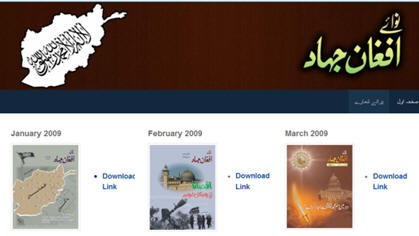
http://nawaeafghan.weebly.com/16621585157516061746-15881605157515851746.html
http://203.211.136.155/~babislam/showthread.php?t=11255
http://ansaarullah.tk/
http://almalahemmedia.wordpress.com/
Service
Delivery:
TTP and its
affiliates have been known to establish a parallel
justice system in their areas of influence, based on
extremist interpretation of Islamic laws.
These courts apparently provide speedy justice and
resultantly also assisting in attracting people to their
cause. The most prominent example of this was seen in
Swat, where Taliban established their courts
[42].
|
|
Name
Variations |
|
The
organization is also referred to as:
1) Pakistan Taliban,
2) Pakistani Taliban,
3) Student Movement of Pakistan,
4) Taliban Movement of Pakistan,
5) Tehreek-e Taliban Pakistan and
6) Tehrik-i Taliban Pakistan
[43].
|
Who they are
TTP is a South
Waziristan based conglomerate of various militant outfits and its ranks
consist of:
Pashtun,
Arab,
Afghan,
Chechen,
Uzbek and
Punjabi militants.
A consultative council of 40 senior Taliban gives guidance to the
organization. The organization has an estimated strength from 5,000 combat
personnel to overall membership of 50,000
[45].
Various tribal affiliations makeup for a considerable strength within the
organization, however due to tribal frictions the relations with local
commanders remains volatile
[46]. It has established chapters in Khyber Pakhtunkhwa and tribal areas, which are led by local commanders
[47].
The organization is believed to have created cross-sectional working groups
with other violent extremist organizations throughout Pakistan. These groups
consist of 10 Ė 15 members each and have assisted in expanding the
operations of the outfit
[48]. TTP has its own extremist version of Deobandi
ideology, where it justifies the use of force and violence to enact Sahriah
law within the country. It also demands Pakistani stateís disassociation
from the coalition for war on terror
[49].
TTP is involved in:
Drug trade,
Kidnap for ransom,
Extortion and
Other criminal activities adopted for generating funds.
Besides these the outfit has long and effective relationship with Al-Qaeda
and Afghan Taliban, providing it with sufficient resources
[50].
The Tehrik-e Taliban Pakistan conducts operations throughout Pakistan with
the assistance of its affiliates. Its influence is mainly in Khyber
Pakhtunkhwa and tribal areas, while it also carries out activities in
Afghanistan
[51].
The outfit is involved in attacks on civilian and military infrastructure
and has also targeted leading political and public figures perceived to be
an opposition to the group.
Besides this, TTP is also involved in rising sectarian conflict within
Pakistan
[52].
History
The catalyst
believed for the formation of TTP was the July 2007 operation conducted at
Lal Masjid (Red Mosque) Islamabad, aimed at clearing out the extremist
militants from the mosque.
Dec 2007-The organization was formed under the leadership of Baitullah
Mehsud during December 2007. A total of 27 pro-Taliban groups were involved
in establishment of the outfit. The primary focus of TTP is mainly for
implementation of Shariah law in Pakistan and violent engagement with
Pakistani security forces
[53]. Its various chapters however also carryout cross
border activities in Afghanistan against coalition troops.
Aug 2009- After the death of Baitullah Mehsud in a drone strike during
August 2009, there was reported tussle between Hakimullah Mehsud and Wali
ur-Rehman Mehsud for the leadership. Eventually, Hakimullah was nominated as
the leader of the outfit
[54].
The group is blamed for various high profile attacks in the urban centers of
Pakistan:
1) These include assassination of former Prime Minister Benazir Bhutto in
December 2007,
2) Suicide blast at Marriott Islamabad in September 2008,
3) Attack on police academy in Lahore during March 2009 and
4) Attack on Pakistan army headquarters in October 2009
[55].
The outfit has been involved in various peace negotiations with the
Pakistani government which have mostly broken down
[56]. There are differences
within the group based on tribal affiliations, operations within Pakistan
and presence of foreign fighters. Resultantly the group has also been
exposed to infighting among various chapters. The group has been proscribed
by the Pakistani government on August 25, 2008. The US State Department had
put the outfit on its Foreign Terrorist Organizations (FTO) on September 01,
2010. Britain proscribed TTP on January 18, 2011, Canada on July 05, 2011
and on July 29, 2011 the United Nations Security Council (UNSC) put the
organization on its international anti-terrorism sanctions list.
Organization's Message
Tehrik-e Taliban
endorses violence to implement Shariah law in Pakistan, while it also
propagates armed struggle against the Pakistani security forces and
coalition forces present in Afghanistan. TTP pledges allegiance to
Mullah
Omar as their supreme leader. The group also considers the democratic and
judicial system in Pakistan being contrary to Islamic ideology, while
benefiting only a certain class.
Target Audience
The organization
uses a variety of tools to gain influence in communities mostly in Khyber
Pakhtunkhwa, Punjab and even Sindh. As mentioned earlier they heavily rely
on tribal loyalties and religious seminaries for recruits. The seminaries
also provide TTP with the necessary supply of suicide bombers. In other
areas they attempt to gain sympathies especially among the women and youth.
They also utilize terror mechanisms such as decapitation of security
personnel or silencing opposing voices through targeted killings, to spread
fear among the community.
Tools
Online Tools:
Twitter:
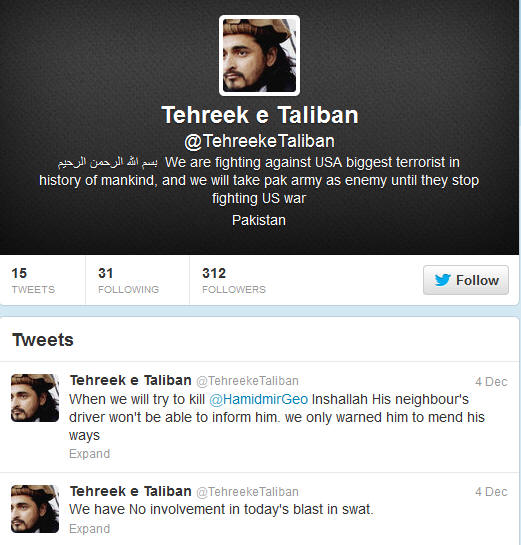
Umer media is broadcast and print media of Tehrik e Taliban Pakistan which have facebook pages and blogs
Facebook Pages: 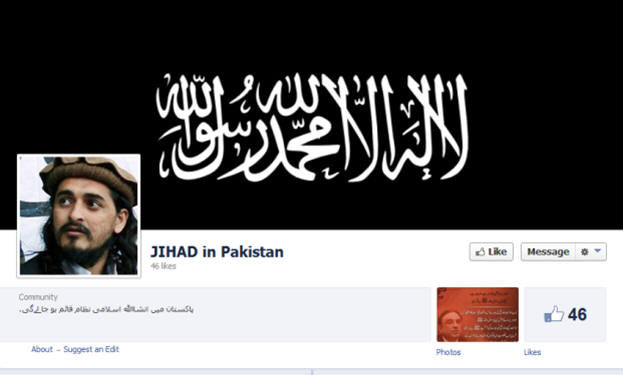
To Download complete details of tools being used by TTP
click here.
Splinter Groups
N/A
|
References:
Rehman, Z. (2013). The Significance of Maulvi Nazirís Death in
Pakistan.
Combating Terrorism Center (CTC). February 20, 2013.
Retrieved on: October 02, 2013.
Retrieved from:
http://www.ctc.usma.edu/posts/the-significance-of-maulvi-nazirs-death-in-pakistan.
|